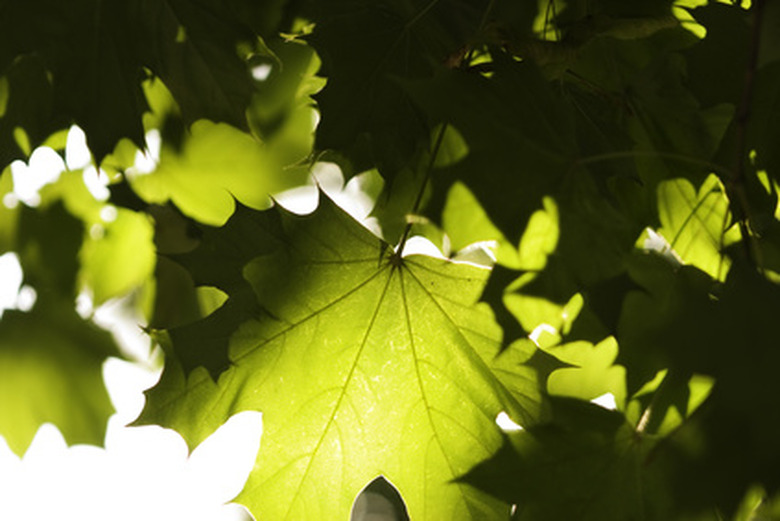Brown Spots On Maple Tree Leaves
Maple trees are among the most popular shade trees in North America. Though some are used for the commercial syrup industry, many others are planted simply for the enjoyment, shade and beauty they provide. The trees, however, are susceptible to many diseases, some of which produce brown spots on the leaves. Maple owners should watch for disease signs and take action, if possible.
Anthracnose
Anthracnose is one of the most common maple diseases and is typically not very serious. The most obvious signs are purplish brown spots that form along the leaf veins. Light brown or dark brown spots may also form between the veins. This maple fungal disease is most commonly noted after a cool, wet winter, which provides the spores with their optimum growing conditions.
- Maple trees are among the most popular shade trees in North America.
- Anthracnose is one of the most common maple diseases and is typically not very serious.
Tar Spots
Tar spots are another common fungal disease in maples that is not considered very serious, but can be a aesthetic eyesore. The spots generally start off as yellow and may become half an inch or more. They eventually turn black, but there is also a stage where they are brown. This disease most commonly appears in mid-June, but may start somewhat earlier in warmer climates.
Fungal Treatment
In both of these cases, the fungus life cycle usually ends when winter comes. Dead leaves can harbor spores over the winter and therefore should be raked and remove to prevent infections in subsequent years. Repeated infections can cause problems for maples, especially those with anthracnose, because premature leaf drop could affect the ability of the tree to sustain itself. If the tree is young enough, you can also spray with a fungicide as a preventative measure, but once the brown spots appear, it is too late.
- Tar spots are another common fungal disease in maples that is not considered very serious, but can be a aesthetic eyesore.
Chlorosis
Chlorosis is somewhat less common than the maple fungal infections, but still can produce brown spots on maples leaves. The first symptom, however, will likely be a pale leaves. Chlorosis can appear at any time other than the winter, if you live in an area where maple trees go dormant in the winter.
Chlorosis Treatment
Chlorosis is an absence of chlorophyll and, if left untreated, can kill the tree, which will not be able to make its own carbohydrates through photosynthesis. It is most commonly caused by an absence of iron or an imbalance in pH levels and may even be the result of over-watering. Have the soil tested and take appropriate action to raise the iron or change the pH, if either one is revealed as the problem.
